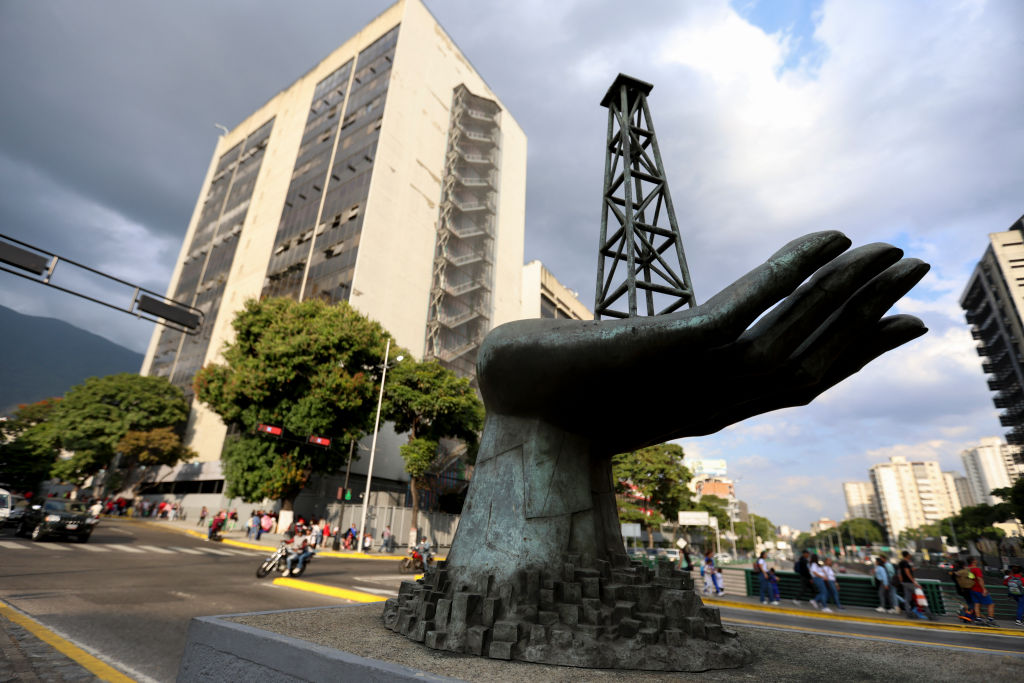Brazil Pumped amid New Hydrocarbon Discovery
Brazil Pumped amid New Hydrocarbon Discovery
Brazil’s discovery of a massive undersea deposit of natural gas could potentially alter its long-term energy strategy and also adversely affect neighboring Bolivia’s lucrative supply of hydrocarbons to its biggest customer.
In a move that could impact foreign policy on top of energy policy, Brazil last week announced the discovery of a massive natural gas reserve a few miles off its northeastern coast. The hydrocarbon field was found on August 11 by Brazilian oil and gas giant OGX Petróleo e Gás Participações S.A. in the underexplored Parnaiba Basin and contains an estimated 15 trillion cubic feet of natural gas. “The discovery was so important that I personally called President [Luiz Inácio Lula da Silva] Lula to give him the news,” said OGX Founder Eike Batista. The estimate of the undersea discovery instantly doubled Brazil’s known natural gas reserves—previously estimated at 12.9 trillion cubic feet—and could offset a dependence on the resource from neighboring Bolivia.
Brazil’s MPX Energia S.A. (which also co-owns the newly discovered field) has since announced plans to develop the offshore deposit and construct a power plant along the coast of the nearby state of Maranhao to process the extracted natural gas. The Parnaiba discovery could also allow Brazil to follow in the footsteps of Peru by developing its own natural gas reserves and producing liquefied natural gas (LNG) for export around the world. Given the 2007 oil discovery in the offshore Tupi pre-salt deposits, the Parnaiba discovery only adds to Brazil’s growing stature.
Initial seismic data suggested the newfound natural gas field could produce as much as 15 million cubic feet of natural gas per day, a reality that could cut Brazil’s current imports of natural gas in half by enabling it to supply between 25 to 30 percent of its own domestic demand. On average, Brazil consumes 40 million cubic feet of natural gas a day and in 2009 consumed almost 300 billion cubic feet of the precious resource. Brazil still relies heavily on its neighbors to supply its needs, obtaining roughly 99 percent of its natural gas imports from Bolivia. Over the past decade, Brazil’s demand for natural gas steadily outpaced its production, highlighted by the construction of the Gasbol pipeline in 2000. Also known as the Bolivia-Brazil pipeline, the 2,000 mile lifeline transports as much as one billion cubic feet of natural gas daily to Brazil from Bolivia’s gas deposits. Brazil was an instrumental partner and investor in developing Bolivia’s natural gas reserves and faced profit losses and potential price increases since Bolivia nationalized its natural gas industry in 2006. The Parnaiba discovery could cause Bolivia to see less of a demand from its neighbor, spelling an economic impact.
In 2009 exports of natural gas generated an estimated $1.96 billion for Bolivia, constituting more than 32 percent of the country’s GDP, which the World Bank estimated to be $16.7 billion the year prior. Hydrocarbon production also accounted for almost half of Bolivia’s overall export revenues. A February 2007 bilateral treaty between Brazil and Bolivia requires Brasilia to buy between 19 million and 31 million cubic meters of gas per day at a fixed rate. However with the Parnaiba discovery and the announcement of plans to develop it, the future of any previous agreement may become an issue between the two governments.
Landlocked, and with two of its bordering countries beginning to develop their own natural gas resources, Bolivia is looking to Argentina (which it currently supplies with 250 million cubic feet of natural gas a year), Paraguay, Uruguay, and possibly Chile to serve as customers for its lucrative hydrocarbon industry. Already last year, heavy rains across Brazil resulted in greater electricity production from hydroelectric dams, lessening the demand for natural gas as an energy source. That development, combined with prior discoveries of natural gas, tampered Brazil’s demand for Bolivian gas and added to the challenges facing Bolivia's government and energy industry. Nevertheless, Brazilian officials this week announced they had no plans for a precipitous drop in demand for Bolivian natural gas.
Learn More:
- OGX’s official website provides a map showing the location of the Parnaiba Basin.
- The U.S. Department of Energy offers a profile and analysis of Brazil.
- Petroleum Economist provides a map showing the pipelines that supply Brazil with natural gas.
- Brazil’s Petrobras offers information about Brazil’s pre-salt oil deposits.
- Read an AS/COA News Analysis of Brazil’s 2007 “Tupi” pre-salt oil discovery.
- Read an AS/COA report on Energy in Peru that discusses the importance of natural gas.
- Read an AS/COA report of Energy and Climate Change in Brazil.








